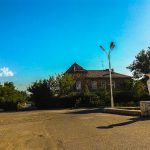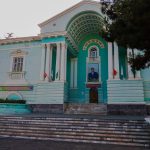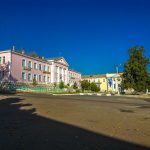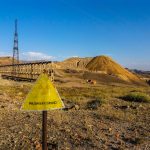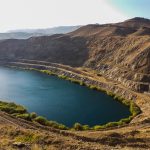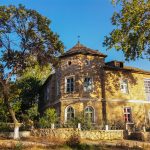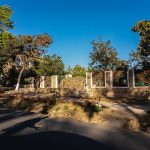Istiqlol (formerly Tabashar) is a small town tucked away in the northern region of the Sughd Province of Tajikistan. Located less than an hour’s drive from Khujand, Istiqlol is much lesser known than many of Tajikistan’s other destinations. However, several wartime sites and an uranium mines have put this little town on the map for adventurous travelers.
There’s precious little information to be found about Tabashar for tourists, and that’s very likely because the Tajik town of Tabashar, in essence, no longer exists. It was renamed in 2012 to Istiklol (also spelled Istiqlol) which literally means ‘Independence’ to mark Tajikistan’s passage to Independence – a momentous occasion in history when Tajikistan and its border countries left the Soviet Union to form three separate republics in 1991.
Istiklol itself isn’t very big. In fact, it’s only home to just over 10,000 people. Forming part of the Ferghana Valley, Tabashar was best known for its old Tajik uranium mine that was used during the Soviet-era until the early 1990s. The mine can be found on the southern side of the Kuramin Mountains, not far from the border of Tajikistan and Uzbekistan, and about 40 kilometers from the Sughd capital of Khujand. However, as the mine still has excess waste and dangerous machinery on-site, it’s not safe for tourists to visit.
One of the most important attractions you can visit in Istiqlol is the series of stone houses that were built by German prisoners of war during the Second World War – they’re a particular highlight for history buffs and local musuem located in the theatre building where you can learn about the history of the town and the largest uranium dumps are at Istiqlol(the Soviet Union allegedly used the locally produced uranium at this secretive site to create the country’s first atomic bomb).
By the 1930s, Istiklol was the largest uranium-mining site in the Soviet Union, and German prisoners of war, as well as German Russians living in other parts of the country, were sent to the town to work in the mines during and after World War II. After the war, the settlers, prisioners and refugees built houses and apartment buildings in lovely German architectural styles along shady, tree-lined streets, resulting in an alpine-looking aesthtic.
After the closure of the mine, the vast majority of the German community left for Germany or other countries, and the overall population fell from a high of some 20,000 in 1989 to 15,600 in 2014, leaving many houses abandoned and the streets earily quiet.The open uranium pits and a radioactive reservoir, are all walking distance from the centre of the town.






